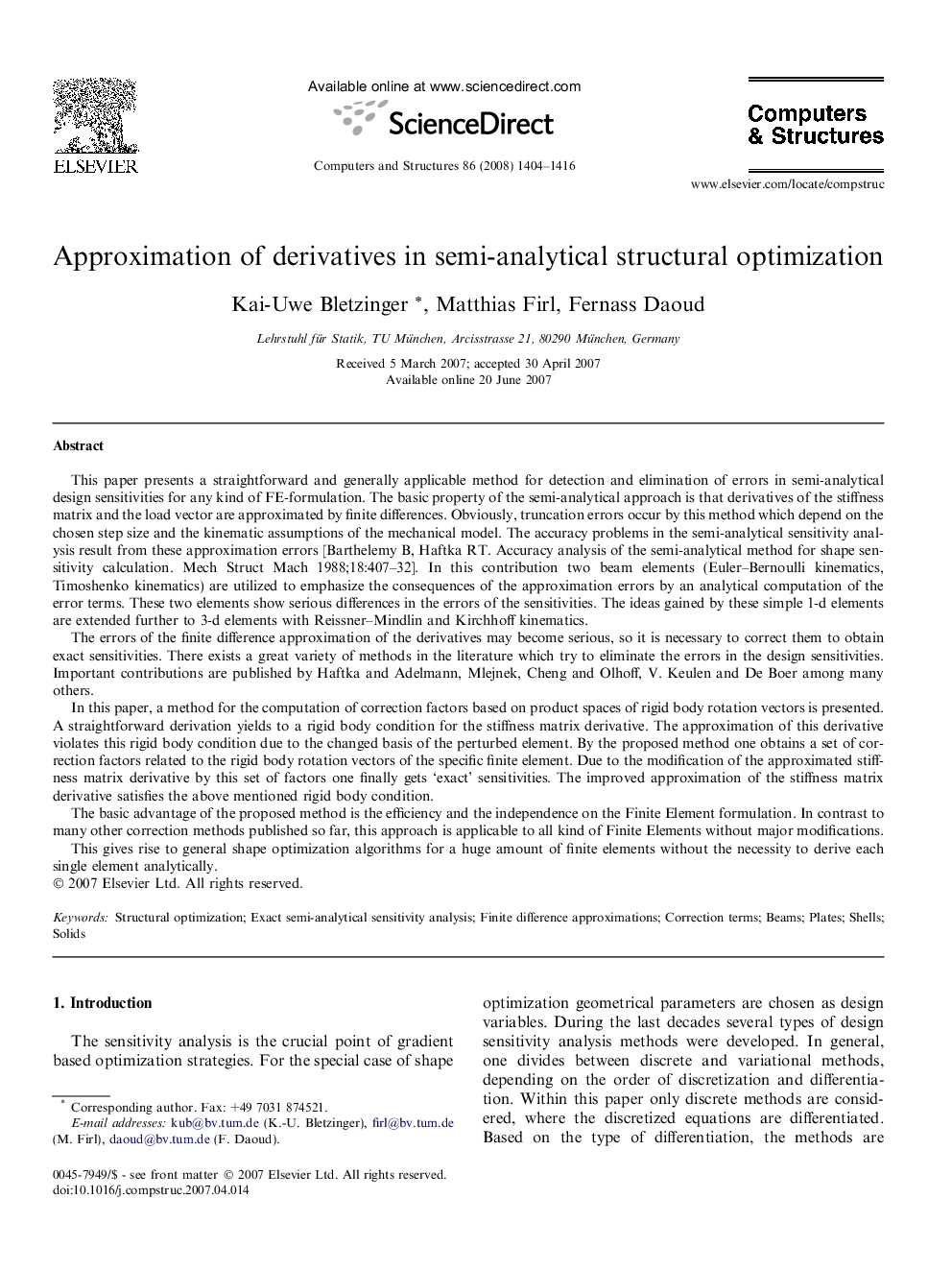| کد مقاله | کد نشریه | سال انتشار | مقاله انگلیسی | نسخه تمام متن |
|---|---|---|---|---|
| 510887 | 865799 | 2008 | 13 صفحه PDF | دانلود رایگان |

This paper presents a straightforward and generally applicable method for detection and elimination of errors in semi-analytical design sensitivities for any kind of FE-formulation. The basic property of the semi-analytical approach is that derivatives of the stiffness matrix and the load vector are approximated by finite differences. Obviously, truncation errors occur by this method which depend on the chosen step size and the kinematic assumptions of the mechanical model. The accuracy problems in the semi-analytical sensitivity analysis result from these approximation errors [Barthelemy B, Haftka RT. Accuracy analysis of the semi-analytical method for shape sensitivity calculation. Mech Struct Mach 1988;18:407–32]. In this contribution two beam elements (Euler–Bernoulli kinematics, Timoshenko kinematics) are utilized to emphasize the consequences of the approximation errors by an analytical computation of the error terms. These two elements show serious differences in the errors of the sensitivities. The ideas gained by these simple 1-d elements are extended further to 3-d elements with Reissner–Mindlin and Kirchhoff kinematics.The errors of the finite difference approximation of the derivatives may become serious, so it is necessary to correct them to obtain exact sensitivities. There exists a great variety of methods in the literature which try to eliminate the errors in the design sensitivities. Important contributions are published by Haftka and Adelmann, Mlejnek, Cheng and Olhoff, V. Keulen and De Boer among many others.In this paper, a method for the computation of correction factors based on product spaces of rigid body rotation vectors is presented. A straightforward derivation yields to a rigid body condition for the stiffness matrix derivative. The approximation of this derivative violates this rigid body condition due to the changed basis of the perturbed element. By the proposed method one obtains a set of correction factors related to the rigid body rotation vectors of the specific finite element. Due to the modification of the approximated stiffness matrix derivative by this set of factors one finally gets ‘exact’ sensitivities. The improved approximation of the stiffness matrix derivative satisfies the above mentioned rigid body condition.The basic advantage of the proposed method is the efficiency and the independence on the Finite Element formulation. In contrast to many other correction methods published so far, this approach is applicable to all kind of Finite Elements without major modifications.This gives rise to general shape optimization algorithms for a huge amount of finite elements without the necessity to derive each single element analytically.
Journal: Computers & Structures - Volume 86, Issues 13–14, July 2008, Pages 1404–1416